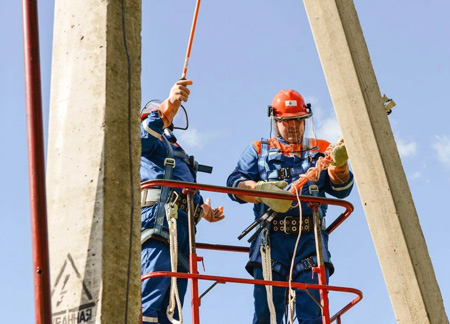
-
 Afrikaans
Afrikaans -
 Albanian
Albanian -
 Amharic
Amharic -
 Arabic
Arabic -
 Armenian
Armenian -
 Azerbaijani
Azerbaijani -
 Basque
Basque -
 Belarusian
Belarusian -
 Bengali
Bengali -
 Bosnian
Bosnian -
 Bulgarian
Bulgarian -
 Catalan
Catalan -
 Cebuano
Cebuano -
 Corsican
Corsican -
 Croatian
Croatian -
 Czech
Czech -
 Danish
Danish -
 Dutch
Dutch -
 English
English -
 Esperanto
Esperanto -
 Estonian
Estonian -
 Finnish
Finnish -
 French
French -
 Frisian
Frisian -
 Galician
Galician -
 Georgian
Georgian -
 German
German -
 Greek
Greek -
 Gujarati
Gujarati -
 Haitian Creole
Haitian Creole -
 hausa
hausa -
 hawaiian
hawaiian -
 Hebrew
Hebrew -
 Hindi
Hindi -
 Miao
Miao -
 Hungarian
Hungarian -
 Icelandic
Icelandic -
 igbo
igbo -
 Indonesian
Indonesian -
 irish
irish -
 Italian
Italian -
 Japanese
Japanese -
 Javanese
Javanese -
 Kannada
Kannada -
 kazakh
kazakh -
 Khmer
Khmer -
 Rwandese
Rwandese -
 Korean
Korean -
 Kurdish
Kurdish -
 Kyrgyz
Kyrgyz -
 Lao
Lao -
 Latin
Latin -
 Latvian
Latvian -
 Lithuanian
Lithuanian -
 Luxembourgish
Luxembourgish -
 Macedonian
Macedonian -
 Malgashi
Malgashi -
 Malay
Malay -
 Malayalam
Malayalam -
 Maltese
Maltese -
 Maori
Maori -
 Marathi
Marathi -
 Mongolian
Mongolian -
 Myanmar
Myanmar -
 Nepali
Nepali -
 Norwegian
Norwegian -
 Norwegian
Norwegian -
 Occitan
Occitan -
 Pashto
Pashto -
 Persian
Persian -
 Polish
Polish -
 Portuguese
Portuguese -
 Punjabi
Punjabi -
 Romanian
Romanian -
 Russian
Russian -
 Samoan
Samoan -
 Scottish Gaelic
Scottish Gaelic -
 Serbian
Serbian -
 Sesotho
Sesotho -
 Shona
Shona -
 Sindhi
Sindhi -
 Sinhala
Sinhala -
 Slovak
Slovak -
 Slovenian
Slovenian -
 Somali
Somali -
 Spanish
Spanish -
 Sundanese
Sundanese -
 Swahili
Swahili -
 Swedish
Swedish -
 Tagalog
Tagalog -
 Tajik
Tajik -
 Tamil
Tamil -
 Tatar
Tatar -
 Telugu
Telugu -
 Thai
Thai -
 Turkish
Turkish -
 Turkmen
Turkmen -
 Ukrainian
Ukrainian -
 Urdu
Urdu -
 Uighur
Uighur -
 Uzbek
Uzbek -
 Vietnamese
Vietnamese -
 Welsh
Welsh -
 Bantu
Bantu -
 Yiddish
Yiddish -
 Yoruba
Yoruba -
 Zulu
Zulu


Dec . 06, 2024 20:44 Back to list
polar snow stakes
The Significance and Applications of Polar Snow Stakes
In the expansive realms of polar regions, where the icy landscapes stretch endlessly, a remarkable tool known as the polar snow stake plays an essential role in scientific research and environmental monitoring. These sturdy markers, typically constructed from durable materials such as plastic or metal, are used primarily to gauge snow depth and monitor snowpack conditions in some of the most remote and extreme environments on Earth.
Polar snow stakes are crucial for various reasons. First and foremost, they provide vital data regarding snow accumulation and melt patterns, which are crucial for understanding climate change and its impacts. In regions where climate shifts can lead to drastic changes in ecosystems, the information gleaned from snow stakes directly informs researchers about the health of local flora and fauna. Indeed, a melting snowpack impacts water availability in surrounding habitats, affecting both terrestrial and aquatic life.
In addition to their role in ecological monitoring, polar snow stakes are essential tools for glaciologists studying ice dynamics. By providing precise measurements of snow thickness, researchers can infer changes in glacier volume, which is a key indicator of climate change. Glaciers act as natural reservoirs, storing vast amounts of fresh water. With the stakes providing longitudinal data, scientists can predict how much fresh water will be available in the future and what that means for communities reliant on that water.
polar snow stakes

Furthermore, polar snow stakes are employed in logistical planning for expeditions and scientific missions in harsh polar environments. They help delineate safe routes for researchers and explorers, marking stable snow areas to avoid treacherous crevasses or unstable ice. This safety measurement is pivotal, as it directly impacts the success and security of polar research expeditions, which often face unpredictable weather and hazardous terrain.
The design of polar snow stakes is also worth noting. Typically, they are long and brightly colored to stand out against the white expanse of snow, often featuring engraved markings for easy measurement. Some modern innovations have even seen the incorporation of sensors within these stakes, capable of transmitting real-time data on temperature, moisture content, and even snow density. This fusion of technology and traditional measurement brings a new era of efficiency and accuracy to snow monitoring.
Moreover, the data collected from these stakes contributes to global climate models, enhancing our understanding of Earth's complex climate system. Accurate snow measurements help refine forecasts related to global warming and its effects on sea-level rise, water resource management, and extreme weather patterns. The long-term data trends observed through the consistent placement of polar snow stakes can reveal insights that span decades, providing a historical context that is invaluable for scientists and policy makers alike.
In conclusion, polar snow stakes are far more than mere markers in the snow. They serve as critical instruments for scientific research, safety, and environmental monitoring in some of the planet's most challenging landscapes. Their contributions to our understanding of snow dynamics, glacial movements, and climate change cannot be overstated. As we continue to confront the reality of climate change, tools like polar snow stakes will undoubtedly play an invaluable role in understanding and mitigating its impacts on our world.
Latest news
What Are Construction Tools and How Are They Used?
NewsJul.11,2025
Professional-Grade Duct Rodding Tools for Superior Cable Installation
NewsJul.11,2025
Enhancing Safety and Efficiency with Modern Hot Stick Solutions
NewsJul.11,2025
Empowering Cable Installation with Advanced Rodder Solutions
NewsJul.11,2025
Elevate Your Cable Installation Projects with Cable Pulling Tools
NewsJul.11,2025
Efficient Cable Handling Solutions: Cable Rollers for Sale
NewsJul.11,2025











